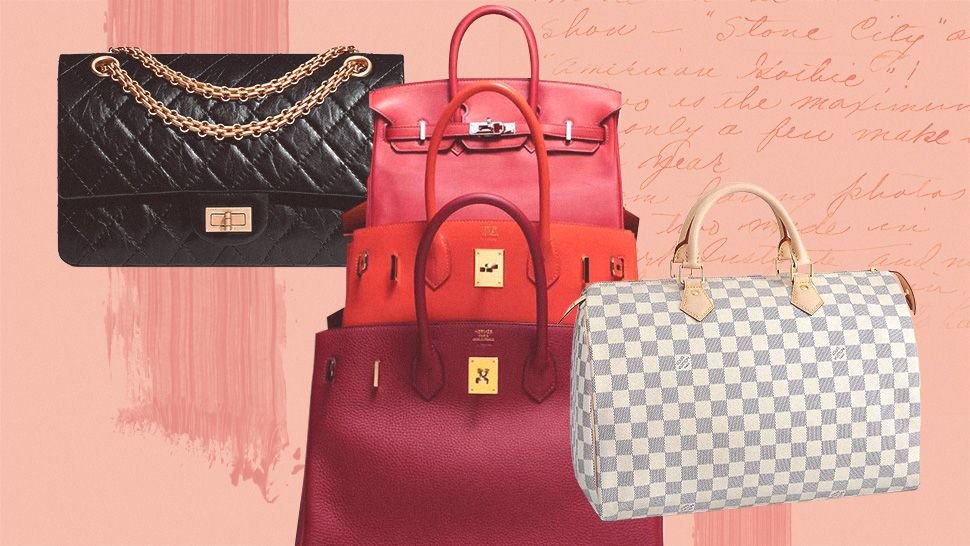Luxury handbags have long been symbols of status, style, and wealth. From the elegant leather designs of Louis Vuitton to the iconic logos of Gucci, these accessories have transformed from practical items into coveted fashion statements. The journey of luxury handbags is filled with innovation, craftsmanship, and the vision of legendary designers who have left an indelible mark on the fashion world.
1. The Origins of the Luxury Handbag
The history of handbags dates back centuries, with early versions primarily used for practical purposes. In the 19th century, as travel became more common, the demand for functional yet stylish luggage grew. This need gave rise to some of the most iconic luxury handbag brands we know today.
1.1. Louis Vuitton (Founded in 1854)
- Founder: Louis Vuitton
- Origins: Louis Vuitton began his career as a box-maker and packer in Paris. In 1854, he founded his own company, initially producing high-quality travel trunks designed to be durable, functional, and lightweight.
- Innovation: In 1896, Louis Vuitton’s son Georges introduced the famous LV monogram canvas as a way to prevent counterfeiting and set the brand apart from competitors.
- Iconic Bags:
- Speedy: Introduced in the 1930s, the Speedy was one of the first luxury handbags designed for everyday use, a shift from Louis Vuitton’s travel trunks.
- Neverfull: Launched in 2007, this tote quickly became one of the brand’s most popular bags, thanks to its spacious design and versatility.
2. The Rise of Italian Handbags
While French brands like Louis Vuitton dominated the 19th century, the early 20th century saw the emergence of Italian luxury, with brands like Gucci leading the way.
2.1. Gucci (Founded in 1921)
- Founder: Guccio Gucci
- Origins: Guccio Gucci opened a small leather goods and luggage store in Florence. Drawing inspiration from the refined aesthetics of the British nobility, Gucci’s early creations were crafted with impeccable Italian craftsmanship.
- Innovation: During World War II, due to material shortages, Gucci began using alternative materials like canvas and bamboo, leading to the creation of the iconic Bamboo Bag in 1947.
- Iconic Bags:
- Dionysus Bag: First introduced in 2015, this modern classic features a signature tiger head closure, representing strength and luxury.
- Jackie Bag: Named after Jackie Kennedy, this bag became a symbol of timeless elegance and remains a staple in Gucci’s collection.

3. The Evolution of Luxury Handbags in the 20th Century
As women’s roles evolved throughout the 20th century, so did the luxury handbag. No longer just a practical item, handbags became essential fashion accessories that represented status and style.
3.1. Chanel (Founded in 1910)
- Founder: Coco Chanel
- Innovation: In 1955, Chanel revolutionized the handbag industry with the introduction of the 2.55 Bag, named after its release date (February 1955). With its signature quilted leather design and a shoulder strap that allowed women to carry their bags hands-free, the 2.55 became an instant classic.
- Iconic Bag:
- Chanel 2.55 Flap Bag: A revolutionary design with a signature turn-lock clasp and chain strap, this bag continues to be one of the most sought-after luxury handbags today.
3.2. Hermès (Founded in 1837)
- Founder: Thierry Hermès
- Origins: Hermès began as a harness and saddle maker but expanded into leather goods, including handbags, in the early 20th century.
- Innovation: In 1935, Hermès introduced the Sac à Dépêches, which was later renamed the Kelly Bag after Grace Kelly, who famously carried it.
- Iconic Bag:
- Birkin Bag: Named after actress Jane Birkin in 1984, this bag became a status symbol due to its high price, exclusivity, and waitlist, cementing Hermès’ place as the pinnacle of luxury handbags.
4. Luxury Handbags in Pop Culture and Modern Fashion
The late 20th and early 21st centuries saw the integration of luxury handbags into mainstream pop culture, with celebrities and influencers contributing to the rise of certain designs.
4.1. Fendi (Founded in 1925)
- Innovation: Fendi’s Baguette Bag, introduced in 1997, became one of the first “It bags,” driven by its appearance in TV shows like Sex and the City. This compact shoulder bag was designed to be worn under the arm, much like carrying a French baguette.
- Iconic Bag:
- Baguette Bag: A symbol of 90s fashion, this bag remains a coveted accessory and has experienced numerous revivals in various colors and materials.
4.2. Prada (Founded in 1913)
- Innovation: In the late 1980s, Miuccia Prada introduced the Nylon Backpack, which defied traditional luxury by using an industrial material. This bold move made Prada a favorite among the fashion-forward and cemented the brand’s place in the modern luxury market.
- Iconic Bag:
- Galleria Tote: This structured tote has become one of Prada’s most recognizable bags, balancing functionality with understated elegance.
5. The Modern-Day Luxury Handbag Craze
Luxury handbags have evolved beyond mere fashion accessories—they are now status symbols, investments, and even collectible items. The resale market for luxury bags has boomed, with certain styles appreciating in value over time. Social media and influencer culture have also played a major role in driving the popularity of luxury bags, with brands launching limited-edition collections and collaborations to meet the demand.
5.1. Saint Laurent (Founded in 1961)
- Founder: Yves Saint Laurent
- Innovation: Saint Laurent, known for its edgy yet classic designs, introduced several iconic bags, including the Kate and Loulou bags, featuring the signature YSL logo.
- Iconic Bag:
- Sac de Jour: Introduced in 2013, this structured, minimalist tote became a favorite for its timeless appeal.
6. What Makes a Luxury Handbag?
Luxury handbags are defined by their craftsmanship, materials, and exclusivity. Brands like Louis Vuitton, Gucci, Hermès, and Chanel invest in the finest leathers, fabrics, and metals to ensure their products are of the highest quality. Each bag is carefully handcrafted, often by artisans who have spent years perfecting their craft. The attention to detail, from the stitching to the hardware, is what separates luxury handbags from their mass-market counterparts.
Conclusion
From Louis Vuitton’s travel trunks to Gucci’s modern classics, luxury handbags have come a long way, evolving from practical items to cultural symbols of wealth and status. The history of these bags is a testament to the innovation, craftsmanship, and enduring appeal of luxury fashion. Today, owning a luxury handbag is not just about style—it’s about carrying a piece of fashion history.




